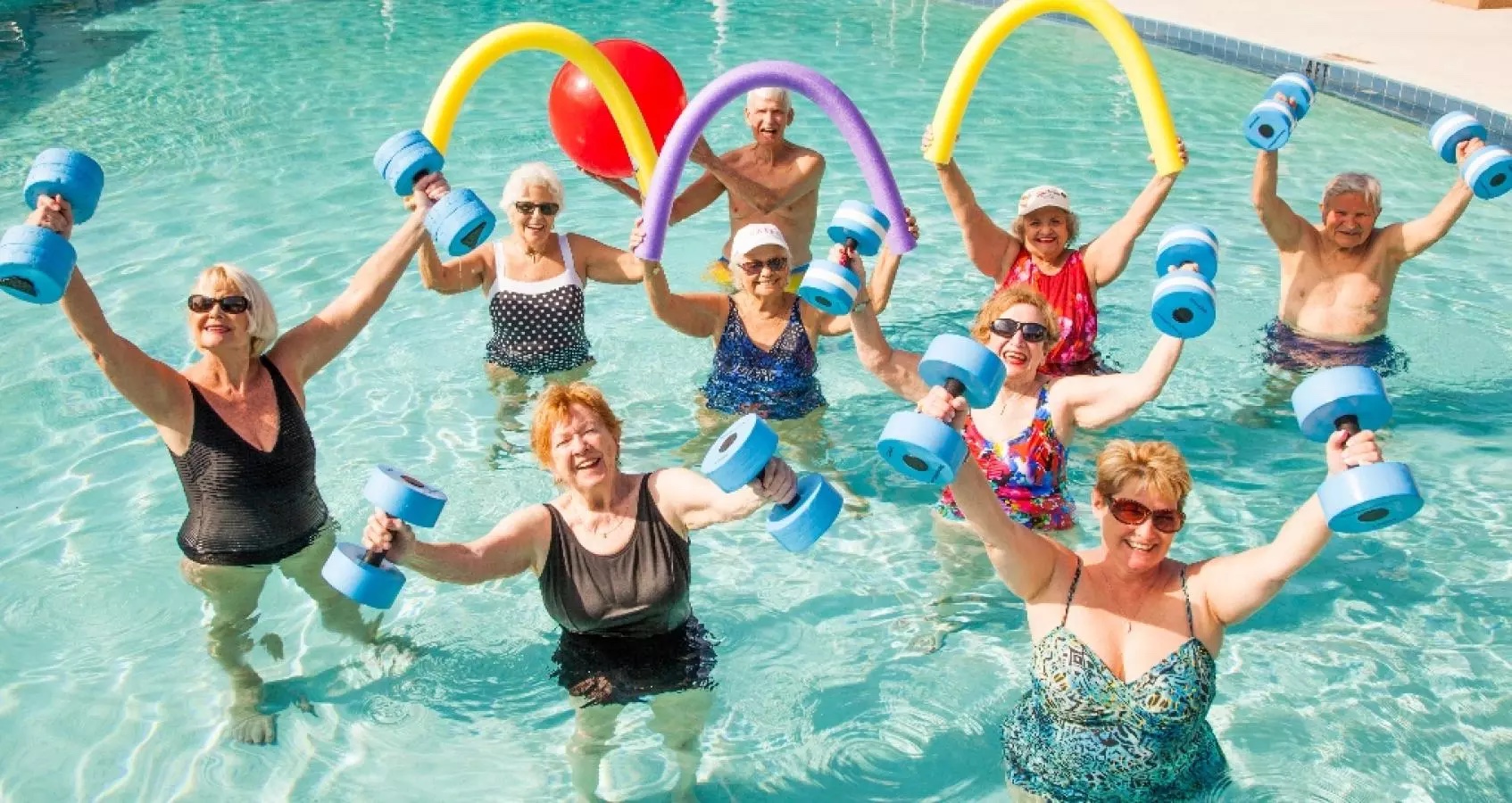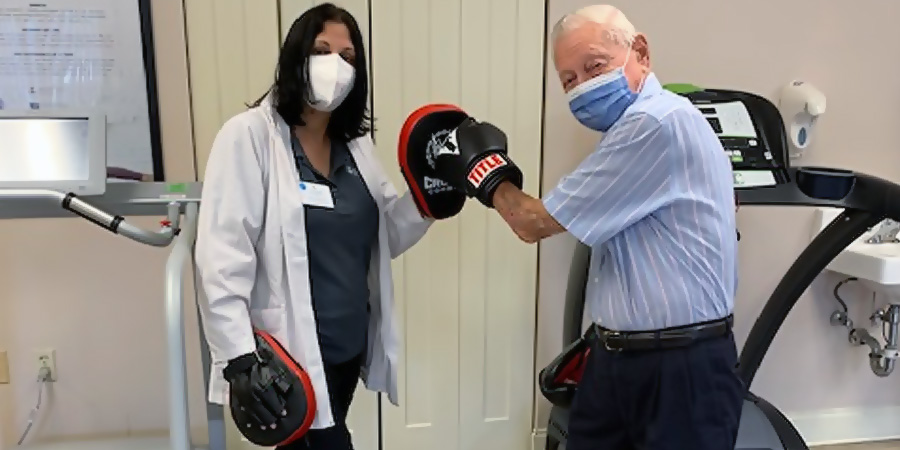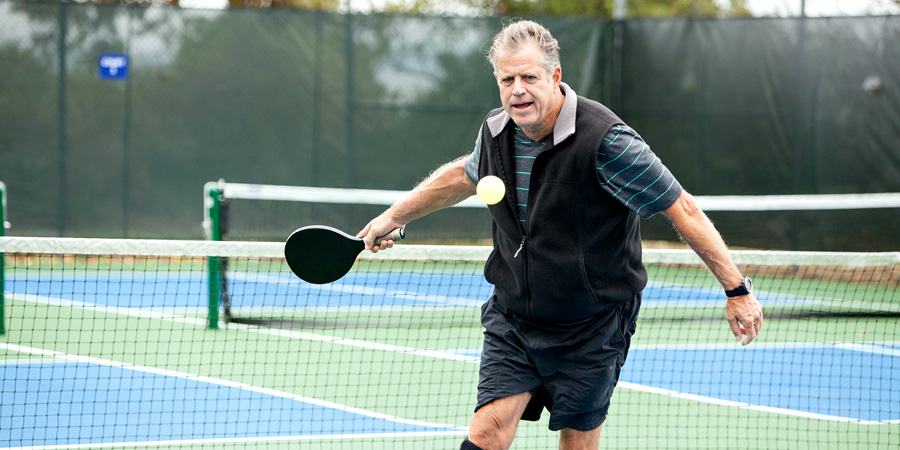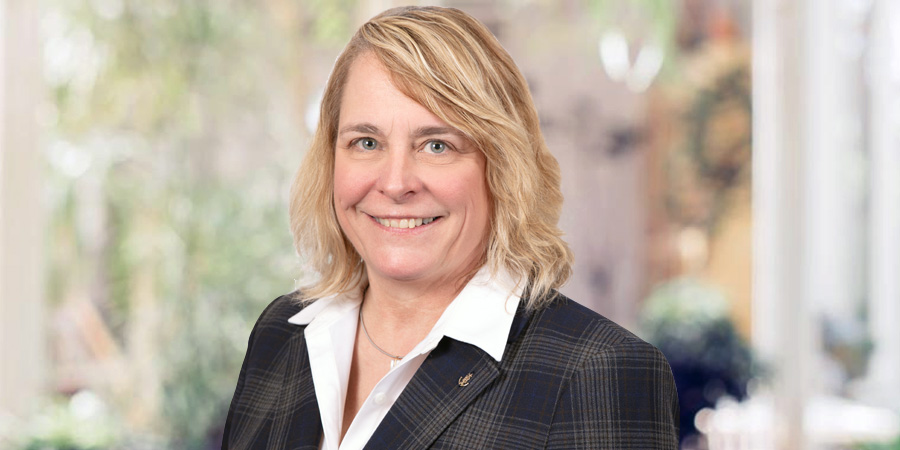Senior Fitness 101: Tips for Staying Active as an Older Adult
February 3, 2022
It’s no secret that consistent exercise plays a huge role in helping seniors live healthier, longer and more independent lives. The benefits are life-changing, but finding the motivation to get moving each day doesn’t get any easier as we get older.
One of the biggest obstacles to getting started with a senior fitness routine is the term “exercise” itself. For some, the word exercise is associated with pain and discomfort. Once you start thinking of exercise as encompassing all forms of “movement,” though, the whole idea of staying active changes—and becomes way more fun. What once may have seemed like something you just did in gym class or for sports practice when you were young can now be done by anyone, of any age or skill level.
Whether it’s pickleball, gardening, or just taking your pup out for a walk around the neighborhood, there are lots of easy and effective ways to incorporate movement into your active senior lifestyle. Not sure where to start in your senior fitness journey?
Here are five tips to help you get motivated to make movement a habit this year and beyond.
1. Make Senior Fitness a Priority
Many of us lead busy lives, and it’s easy to put physical activity at the bottom of the “to do” list. Remember, though, being active is one of the most important things you can do each day to maintain and improve your health. Make it a point to include physical activities throughout your day. Try being active first thing in the morning before you get busy. Think of your time to exercise as a special appointment and mark it on your calendar.
2. Make It Easy to Stay Active
If it’s difficult, costs too much, or is too inconvenient, you probably won’t be active. When it comes to senior fitness, as with any age, you are more likely to exercise if it’s easy to do. Put your two-pound weights next to your easy chair so you can do some lifting while you watch TV or walk up and down the soccer field during your grandchild’s game. When you go out to get the mail, go for a walk around the block. Or consider joining a gym or senior fitness center that’s close to home. You can be active all at once or break it up into smaller amounts throughout the day—just keep moving.
Whatever sort of senior fitness regimen you choose, be sure it incorporates these four types of exercise recommended for older adults:
| Senior Fitness Exercises – Four Key Types of Exercise for Older Adults | |
|---|---|
| Endurance | Try to build up to at least 30 minutes of activity that leaves you breathing hard. You can do it in 10-minute increments, you can do it 3-5 times a week. Start low and slow and increase duration and energy level as you get more fit. |
| Strength | Everything you do requires muscles: getting up from a chair, lifting a grandchild, carrying groceries are all things you’d like to be able to do without needing assistance. Keeping your muscles in shape keeps you independent. |
| Balance | Falls are the leading cause of fractures, hospital admissions for trauma, loss of independence, and injury deaths among seniors. Incorporating balance exercises into your senior fitness routine is crucial for safety. Practicing standing on one foot and walking heel to toe can help you improve your balance. |
| Flexibility | Stretching is something you can do anytime and anywhere. Stretch your arms, legs, neck, and back. You’ll find it easier to tie your shoes, look over your shoulder when backing out of the driveway, and reach for things whether they’re on a high shelf or the ground. |
3. Make Senior Exercise Safe
Moderate physical activity, such as brisk walking, is safe for almost all older adults. Even so, avoiding injury is an important thing to keep in mind, especially if you’re just starting a new activity or you haven’t been active for a long time. Talk to your doctor if you have an ongoing health condition or certain other health problems or if you haven’t seen your doctor for a while.
Ask how physical activity can help you, whether you should avoid certain activities, and how to modify exercises to fit your situation. You may feel some minor discomfort or muscle soreness when you start to exercise. This should go away as you get used to the activities; however, if you feel sick to your stomach or have strong pain, you’ve done too much. Go easier and then gradually build up. Consider working with a senior physical trainer like an Ageility Fitness specialist to help guide you in your progression.
4. Make It Social
Maintaining an active senior lifestyle is so much easier when you’re not doing it alone. Enlist a friend or family member. Many people agree that having an “exercise buddy” keeps them going. Take a yoga class with a neighbor. If you don’t already have an exercise partner, find one by joining a walking club at your local mall or take a walk during lunch with a co-worker.
5. Make It Interesting and Fun
To help you feel motivated and excited to maintain a senior fitness routine, do things you enjoy and pick up the pace a bit. If you love the outdoors, try biking, fishing, jogging or hiking. Listen to music or a book on CD while walking, gardening or raking. Most people tend to focus on one activity or type of exercise and think they’re doing enough. The goal is to be creative and choose exercises from each of the four categories—endurance, strength, balance and flexibility. Mixing it up will help you reap the benefits of each type of exercise, as well as reduce boredom and risk of injury.
The Ageility Difference — Older adult fitness catered to you
Whether you’re just getting started toward a more active lifestyle or have been active your whole life, sometimes taking the next step can be daunting, especially when you’re going it alone. Ageility rehab and senior fitness specialists are here to help. Whether your goal is competing in the National Senior Games or playing catch with grandkids, Ageility’s older adult fitness training plans are tailored to help you reach your highest possible level of fitness, and have fun doing it. Work with your Ageility Team to create a movement practice you can do safely and enjoy. Find an Ageility clinic near you to learn more.




